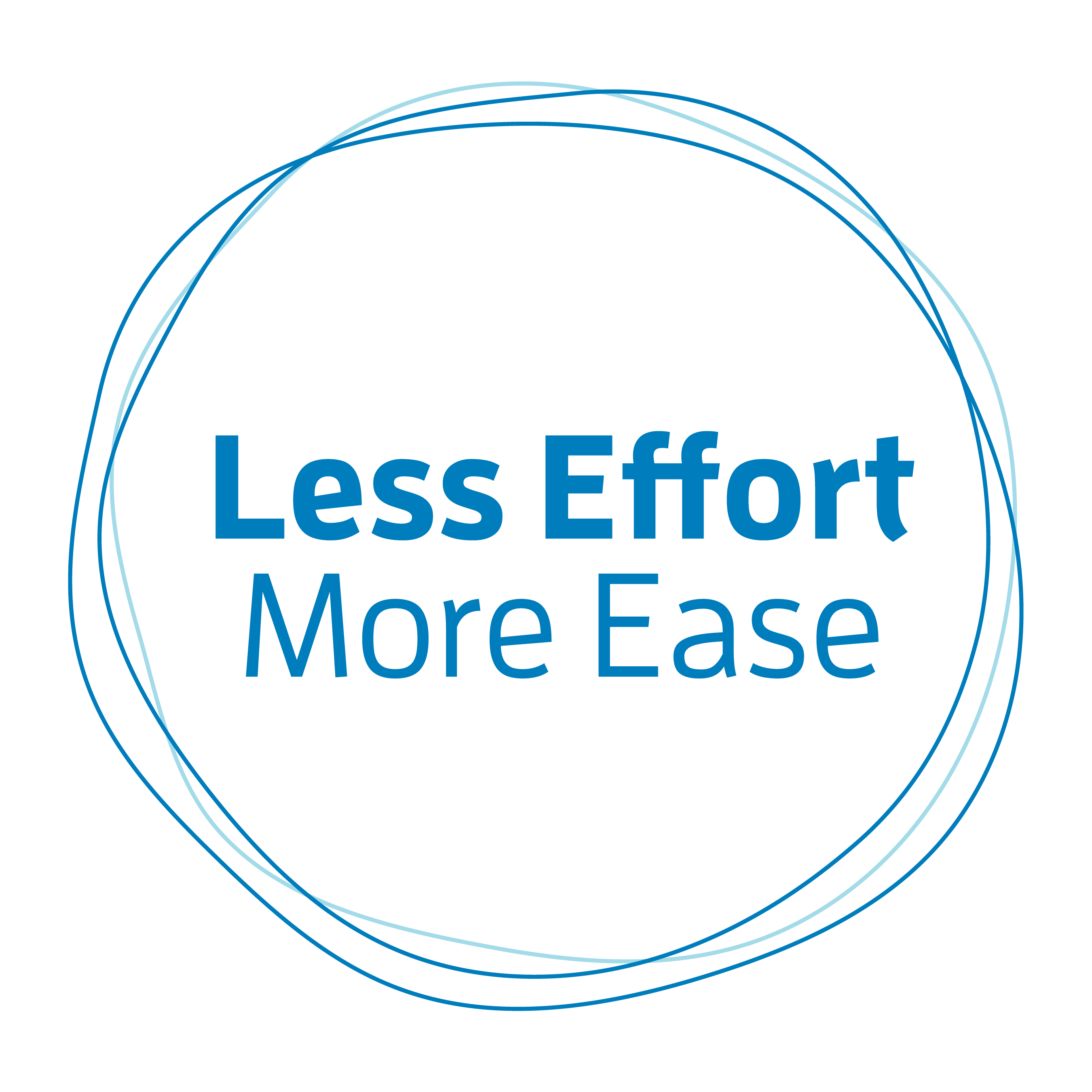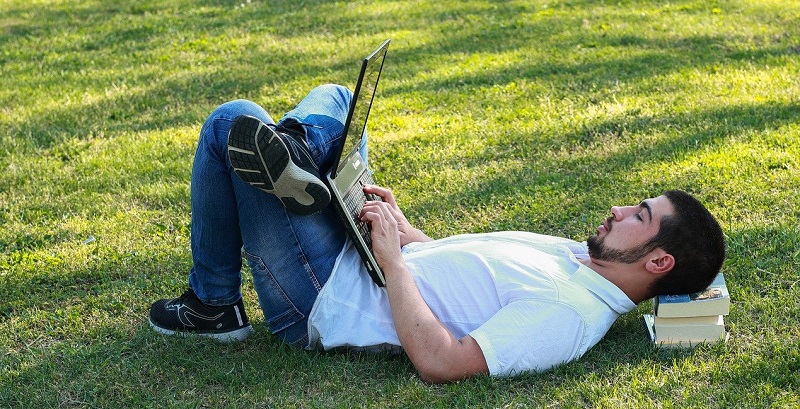Wondering what’s the best position to be in as you sit at your desk to work? (or if you’re working from home—at your kitchen table, living room couch, or bedroom?) Wondering if standing is better than sitting? These are some of the most frequently asked questions in my studio. My answer remains the same. And it’s very simple.
My advice: Move—and make whatever adjustment you need to in your environment to make that happen as much as possible.
Any position you get yourself into will put certain stresses on the body. Change it up, even a little bit, and you’ll change up those stresses. There’s a reason why ergonomic consultants like to say, “the best position is the next position.”
The problem with moving and changing positions in a modern office setting or in modern life, in general, is that it bucks the cultural norm.
Growing up in school you’re taught to sit quietly at your desk and not fidget. Otherwise, you’re not paying attention. Once you’re out of school it doesn’t change. You’re asked to sit regularly through hours-long meetings, performances, and classes—very often without a break.
Not only is moving not the norm but you’re so conditioned to sit that you worry you’ll disrupt things, draw unwanted attention to yourself, or bother others if you choose to get up to simply stand at the back of the room for a while. I bet you’ve more than once stayed in your seat, your butt getting numb, back aching, wishing for that break that never comes—all because you’re concerned you’ll disrupt whatever is going on or annoy others.
Years ago, I realized if anything is going to change it has to start with me. It took me quite a long time to learn to make some waves and rock the boat a bit to take care of myself. I still struggle especially with worrying that others will be bothered if I do what I need to do to take care of myself physically. But when I do what I need to do in a reasonable way my body thanks me for it again and again.
***
Last year I wrote about how I deal with meetings nowadays—the ones that go on and on and on without a reasonable break factored in. In it, I shared my five tips for getting through a long meeting. Here they are:
1) Show up early and talk to the presenter before things start to let her know you’ll be standing up periodically and why.
2) Sit in the back of the room or at the end of the row.
3) Choose a seat or (if possible) angle your chair in such a way that you’re looking at the presenter or screen straight on instead of having to twist your body or head in a strange way to see. For a couple of minutes, this is not a big deal. But for two hours, your neck will probably speak to you about it.
4) THIS IS THE MOST IMPORTANT TIP! Stand up before you’re uncomfortable. For me, this is every 20 minutes. For you, it may be different. But whatever it is, make sure you do it.
5) Watch your habit of assuming that you’re going to be bothering other people simply because you’re taking care of yourself.
Now in the time of COVID-19, stay-at-home orders, and working remotely you’d think it’d be easier to do what your body needs to do more of—move and change positions—even if you’re in a lot of Zoom meetings. After all, you’re in your own space. You can arrange things to suit you. You’re not going to bother others if you stand up or ask to be let out of a row. The question is, have you been taking advantage of the current situation?
***
I participated in a four-day virtual Alexander Technique retreat between Christmas and New Year’s. I was both a presenter and a participant. It was a great four days. Bittersweet, because although we were still able to be together and learn from each other, we weren’t in our usual annual spot, high atop a hill in the back of a canyon overlooking the Pacific Ocean in Malibu, California.
Even though I have years of practice as an Alexander teacher and of taking care of myself, I found it difficult to remember to get up and change positions regularly—especially for the sessions that were primarily discussion. As I mentioned earlier, for me the key is changing positions or getting up every 20 minutes. When I did, I made it through the sessions much better.
It was interesting because I was in my studio, a large comfortable carpeted space with ample room to move around in. I have a lot of different things to sit on and there was nobody in my room for me to worry about disrupting if I kept changing up what I was doing.
Just because you can change your behavior, doesn’t mean you do. You can have everything in place to enable you to do things differently, but you still have to get over the hurdle of years and years of doing it one way. And that’s usually the hardest part.
***
I taught a student for many years and if she’s reading this now, I’m sure she’ll recognize herself in the tale I’m about to tell.
I was talking with this particular student at her lesson one day. She was lamenting the fact that she often noticed herself slumped forward toward her computer. She wanted to know how to stop herself from doing that. I started by asking her a bunch of questions about her office setup. Turns out she had an adjustable-height desk. “Great!” I said.
My standard follow-up question when I find out a student has an adjustable height desk is, “How easy is it to adjust?” All she had to do was push a button and it went up and down. She could stop it anywhere along the way. “Fantastic!” I replied.
My next question was, “So, how often do you push the button and adjust the desk during a typical day?” “Probably once during the day”, she said. My reply was swift. “Once!” I exclaimed. “I get absorbed in my work and I forget I can push the button”, she sheepishly explained. And this is the crux of the problem.
You can have the most wonderful equipment in the world, an office outfitted to allow you to work in a myriad of different positions and to move throughout your workday. But none of it matters if you don’t choose to change your behavior. And that requires you to think about it.
The way we habitually work is our auto-pilot, our normal. If that’s been sitting in your chair in one position for an hour or two, completely focused on your work you’ll continue to do that even if you have a great new adjustable-height desk. Unless you think about it.
Having a great setup or new equipment is only step one. Now you need to work on creating a new habit of working, a new normal. Creating a new habit doesn’t just happen because you want it to. You have to think about it.
In my student’s case, she needed to figure out how to remember to push the button more often. A week later she came in again and I asked her how it was going. She was pushing it maybe four times a day whereas before she was pushing it once a day.
Even more interesting, she had sent a memo out to her office mates to join her in challenging themselves to all push the button more often (turns out they all had adjustable height desks). Recruiting others who want to work on making similar changes in their life is a great way to help you establish new habits. If you have ever tried to start exercising more, having a friend that you agree to meet and walk with every day at lunch can help. It’s called accountability.
Maybe you’re still working from home. Perhaps you love it or hate it. Either way, take advantage of the freedom you have to set up your space the way you want. And create a new normal of working—moving!
Simple, not necessarily easy.
But worth it.
Your body will thank you for it.
Image by Валентин Симеонов from Pixabay
P.S. Are you a subscriber to my e-newsletter? If you like this blog and are craving more information on how to move better and feel better there’s no better time to sign up. You’ll get a free booklet with tips for exploring your posture (that has nothing to do with standing up straight and pulling your shoulders back. I promise!). And once a month I’ll pop into your inbox with new ideas for you to experiment with. In addition, you’ll be the first to know about any upcoming events, local or online.



